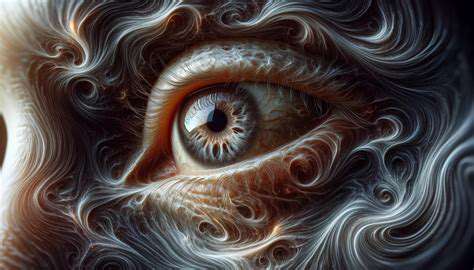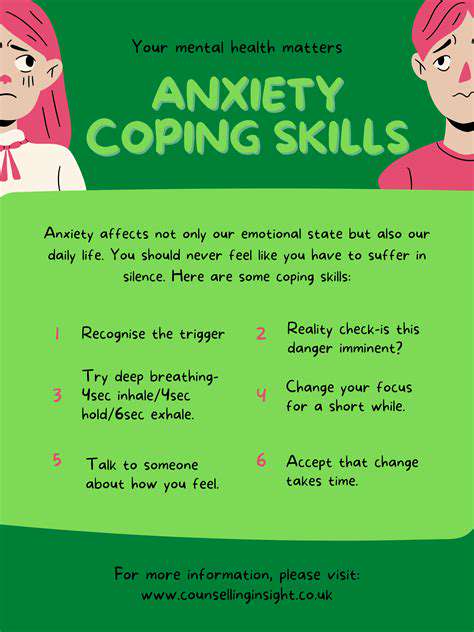Anxiety Twitching: Causes, Effects, and Coping Strategies
What Causes Anxiety Twitching?
Understanding the Biological Mechanisms
Anxiety twitching, also known as muscle fasciculation, often stems from the body's natural response to stress. When individuals experience anxiety, the sympathetic nervous system is activated, triggering a fight or flight response. This activation can lead to increased muscle tension, which may cause twitching in various muscles throughout the body.
The release of stress hormones like adrenaline can also contribute to twitching. These hormones prepare the body to react, causing muscles to contract involuntarily. Over time, chronic anxiety may lead to persistent twitching, as the muscles remain in a heightened state of sensitivity and tension.
Additionally, neuromuscular changes associated with anxiety can exacerbate these symptoms. Electrolyte imbalances due to dehydration or poor nutrition, common in anxious individuals, can lead to increased muscle excitability and subsequent twitching.
Understanding these biological mechanisms is crucial for individuals experiencing anxiety twitching. Recognizing that these twitches are a physical manifestation of anxiety can help in addressing both the symptoms and the underlying anxiety disorders.
The Emotional and Psychological Factors
Emotional factors play a significant role in anxiety twitching. Individuals who face high-stress levels from work, relationships, or personal issues may find that their emotional states directly influence the frequency and intensity of twitching. During moments of heightened anxiety, these twitches can become more pronounced, creating a cycle of worry that worsens the anxiety itself.
Cognitive patterns, such as negative thinking or catastrophizing, can also contribute to anxiety twitching. When people focus on their physical symptoms, the increased attention can lead to more twitching as a response to heightened self-awareness and stress. This can create a feedback loop, where anxiety about twitching leads to more twitching, which in turn causes more anxiety.
Furthermore, individuals with a history of anxiety disorders may develop a conditioned response where twitching becomes associated with feelings of panic or distress. This Pavlovian response can make it difficult for individuals to cope, leading them to avoid situations that may trigger both anxiety and twitching.
Addressing these emotional and psychological factors is essential in developing effective coping strategies for anxiety twitching. Therapy, mindfulness practices, and cognitive-behavioral techniques can help individuals reframe their thoughts and reduce the overall impact of anxiety on their physical and emotional well-being.
The Psychological Impact of Anxiety Twitching

The Nature of Anxiety Twitching
Anxiety twitching, often referred to as muscle twitching or fasciculations, is a common physical manifestation of anxiety disorders. This involuntary movement can be triggered by heightened stress, nervousness, or overwhelming situations. People may notice twitching in various parts of the body, particularly the eyelids, face, or limbs. Understanding the nature of this twitching can help individuals recognize it as a symptom of their anxiety rather than a sign of a more serious health issue.
The twitching may vary in intensity and duration, with some experiencing occasional twitches while others may have more persistent symptoms. It can also be accompanied by other physical symptoms such as muscle tightness or tension. Recognizing that anxiety can manifest in physical ways is crucial for effective coping.
Those experiencing anxiety twitching may find that certain triggers exacerbate their symptoms. For instance, stressful events, lack of sleep, or even caffeine consumption can lead to increased twitching. Acknowledging these triggers can empower individuals to manage their anxiety more effectively.
Overall, understanding anxiety twitching requires a holistic approach that considers the interplay between mental and physical health. By addressing both aspects, individuals can find relief and develop effective strategies to cope with their anxiety.
Effects of Anxiety Twitching on Daily Life
The presence of anxiety twitching can significantly impact an individual's daily life. Many people report feeling self-conscious about their twitching, which can lead to social anxiety and avoidance of certain situations. This self-awareness can create a cycle where anxiety causes twitching, and twitching further heightens anxiety, making it difficult to break free.
In professional environments, individuals may experience challenges in focusing or maintaining their composure during meetings or presentations. The fear of twitching in front of colleagues can hinder performance and affect career advancement. Furthermore, the stress of worrying about twitching can contribute to decreased overall productivity.
Anxiety twitching can also disrupt personal relationships, as loved ones may not understand the significance of the symptoms. This lack of understanding may lead to frustration or misinterpretation of the twitching behavior, creating additional strain. Open communication about anxiety and its symptoms can help foster support and understanding.
Ultimately, the effects of anxiety twitching are multifaceted, influencing self-esteem, professional life, and social interactions. Learning to manage these effects is essential for improving quality of life.
Coping Strategies for Anxiety Twitching
Adopting effective coping strategies is vital for managing anxiety twitching. One of the most common approaches is practicing relaxation techniques, such as deep breathing, meditation, or yoga. These practices can help calm the mind and reduce the intensity of twitching episodes.
Incorporating regular physical activity into one's routine can also be beneficial. Exercise has been shown to release endorphins, which help alleviate symptoms of anxiety. Engaging in activities that promote strength and flexibility can lessen muscle tension and decrease the occurrence of twitches.
Another important strategy is to maintain a well-balanced diet and stay hydrated. Certain dietary choices can influence anxiety levels, such as excessive caffeine or sugar intake. By consuming a diet rich in whole foods, individuals may find an improvement in their overall mental health and a reduction in twitching related to anxiety.
Finally, seeking professional support, whether through therapy or support groups, can provide valuable tools for coping with anxiety twitching. Guidance from a mental health professional can help in developing personalized coping strategies and fostering a greater understanding of one's anxiety symptoms.
Coping Strategies for Managing Anxiety Twitching

Understanding Anxiety Twitching
Anxiety twitching refers to involuntary muscle spasms that often occur when a person experiences heightened levels of stress or anxiety. This twitching can manifest in various forms, from eye twitches to muscle jerks. Understanding the underlying causes can help individuals manage their symptoms more effectively.
Physical and Emotional Effects
The physical effects of anxiety twitching can range from temporary discomfort to significant disruption in daily activities. Chronic twitching may lead to muscle soreness or fatigue over time, which can exacerbate anxiety levels. Thus, it becomes a vicious cycle that can impact an individual’s overall well-being.
Emotionally, these twitching episodes can create feelings of embarrassment or self-consciousness, especially in social situations. This can discourage individuals from engaging with others, potentially leading to isolation and increased anxiety.
Effective Coping Strategies
One effective strategy to manage anxiety twitching is regular physical activity. Engaging in exercises such as yoga or walking helps release endorphins, which can naturally reduce anxiety levels and decrease the occurrence of twitching.
Another approach is practicing relaxation techniques, such as deep breathing exercises or meditation. These techniques can calm the mind and body, effectively reducing stress and its physical manifestations, like twitching.
Professional Help and Resources
For those who find that anxiety twitching significantly impacts their life, seeking professional help is crucial. Therapists specializing in anxiety disorders can provide coping mechanisms tailored to individual needs.
Additionally, support groups and online communities can offer shared experiences and strategies from others facing similar challenges. Connecting with others can alleviate feelings of isolation and provide valuable resources for managing anxiety twitching.